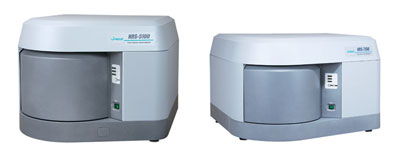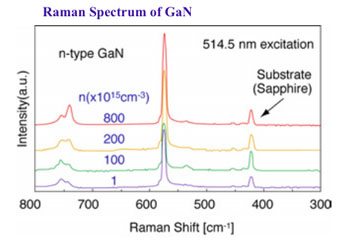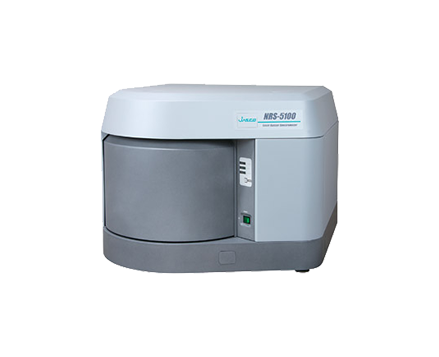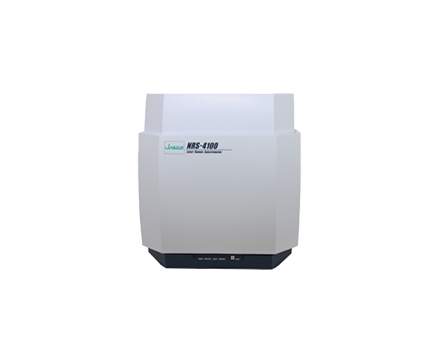Raman for the evaluation of carrier concentrations in GaN
August 23, 2022
Introduction
Use of Raman spectrometry for the analysis of Gallium Nitride (GaN) crystallization and carrier concentration

Gallium Nitride (GaN), is one of a generation of promising light-emitting materials, and can be analyzed using 514.5 nm excitation to evaluate crystallization and carrier concentration. Using a Visible laser, surface analysis up to nm order in thickness can be performed.

Until 1993, the only blue light-emitting devices commercially available were based on silicon carbide, which has an indirect band gap, and so is not capable of sufficient brightness to be of wide interest. The development of the first high intensity GaN light-emitting diode (LED) by Shuji Nakamura, working for the Nichia company in Japan, completed the range of primary colors, and made possible applications such as daylight visible full-color LED displays, white LEDs and blue laser devices. GaN-based blue laser diodes are used in the Blu-ray disc technology as well as in devices such as the Sony PlayStation.The first GaN-based high intensity LEDs used a thin film of GaN deposited via MOCVD on sapphire. Other substrates used are zinc oxide, with a lattice constant mismatch of only 2%, and silicon carbide (SiC). (Source: Wikipedia)
Featured Products:

Raman for the evaluation of carrier concentrations in GaN
Introduction
Use of Raman spectrometry for the analysis of Gallium Nitride (GaN) crystallization and carrier concentration

Gallium Nitride (GaN), is one of a generation of promising light-emitting materials, and can be analyzed using 514.5 nm excitation to evaluate crystallization and carrier concentration. Using a Visible laser, surface analysis up to nm order in thickness can be performed.

Until 1993, the only blue light-emitting devices commercially available were based on silicon carbide, which has an indirect band gap, and so is not capable of sufficient brightness to be of wide interest. The development of the first high intensity GaN light-emitting diode (LED) by Shuji Nakamura, working for the Nichia company in Japan, completed the range of primary colors, and made possible applications such as daylight visible full-color LED displays, white LEDs and blue laser devices. GaN-based blue laser diodes are used in the Blu-ray disc technology as well as in devices such as the Sony PlayStation.The first GaN-based high intensity LEDs used a thin film of GaN deposited via MOCVD on sapphire. Other substrates used are zinc oxide, with a lattice constant mismatch of only 2%, and silicon carbide (SiC). (Source: Wikipedia)

 Download This Application
Download This Application

